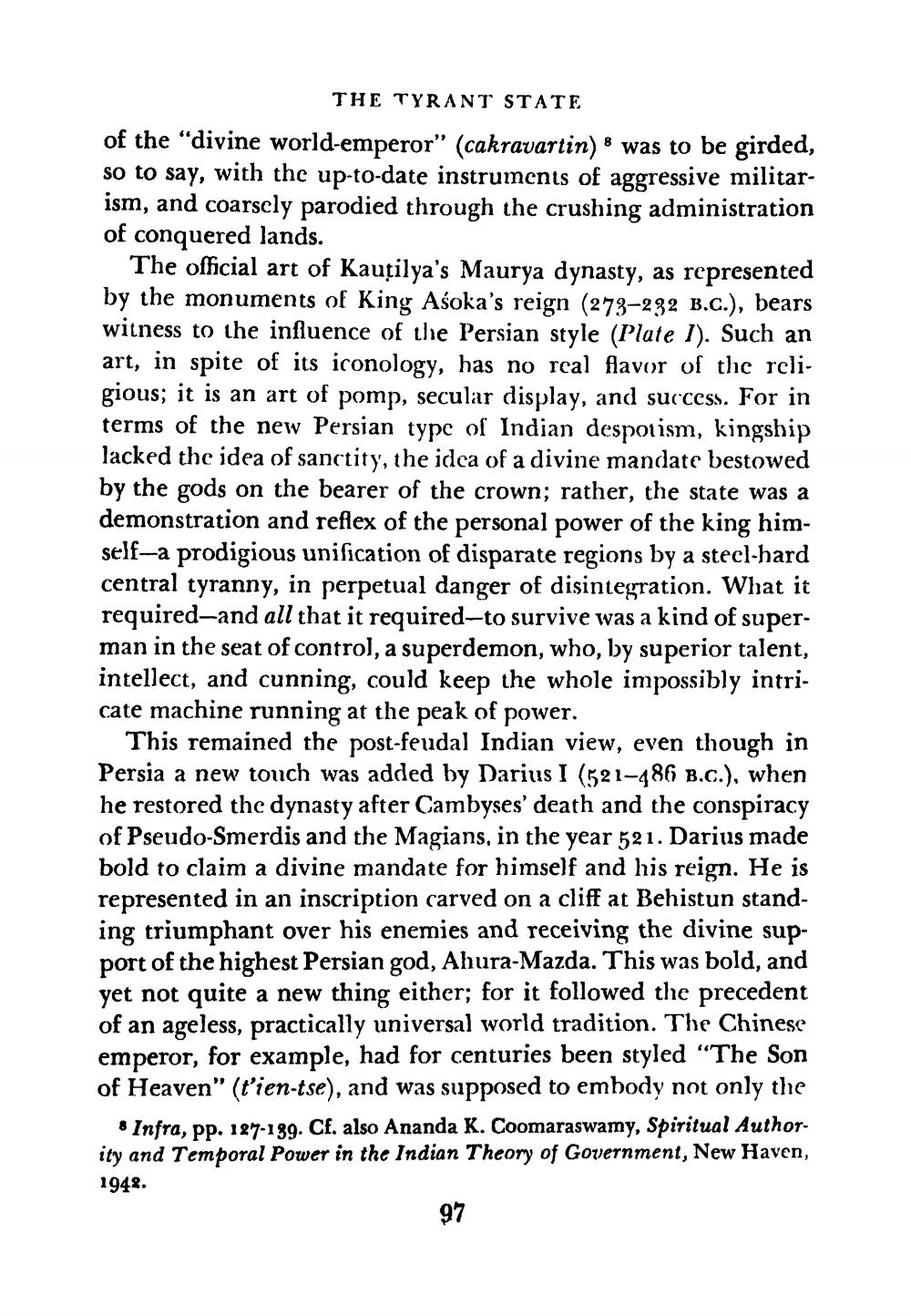________________
THE TYRANT STATE
of the "divine world-emperor” (cakravartin) & was to be girded, so to say, with the up-to-date instruments of aggressive militarism, and coarscly parodied through the crushing administration of conquered lands.
The official art of Kauțilya's Maurya dynasty, as represented by the monuments of King Aśoka's reign (273-232 B.C.), bears witness to the influence of the Persian style (Plate 1). Such an art, in spite of its iconology, has no rcal flavor of the religious; it is an art of pomp, secular display, and success. For in terms of the new Persian type of Indian despotism, kingship lacked the idea of sanctity, the idea of a divine mandate bestowed by the gods on the bearer of the crown; rather, the state was a demonstration and reflex of the personal power of the king himself-a prodigious unification of disparate regions by a steel-hard central tyranny, in perpetual danger of disintegration. What it required-and all that it required-to survive was a kind of superman in the seat of control, a superdemon, who, by superior talent, intellect, and cunning, could keep the whole impossibly intricate machine running at the peak of power.
This remained the post-feudal Indian view, even though in Persia a new touch was added by Darius I (521-486 B.C.), when he restored the dynasty after Cambyses' death and the conspiracy of Pseudo-Smerdis and the Magians, in the year 521. Darius made bold to claim a divine mandate for himself and his reign. He is represented in an inscription carved on a cliff at Behistun standing triumphant over his enemies and receiving the divine support of the highest Persian god, Ahura-Mazda. This was bold, and yet not quite a new thing either; for it followed the precedent of an ageless, practically universal world tradition. The Chinese emperor, for example, had for centuries been styled “The Son of Heaven" (t'ien-tse), and was supposed to embody not only the
Infra, pp. 127-189. Cf. also Ananda K. Coomaraswamy, Spiritual Authority and Temporal Power in the Indian Theory of Government, New Haven, 1942.




